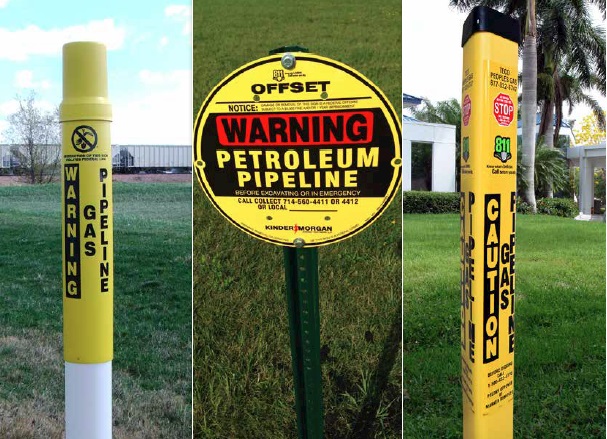
An effective marking system is vital to the prevention of damages to buried facilities and avoiding life-threatening accidents related to excavation. A permanent marking system is on duty 24 hours a day, 7 days a week. It is your last line of defense against third-party damage to underground utilities.
The return on investment on the installation and maintenance of a permanent marking system for facility owners is important, but societal costs are also an important consideration. Last year a Canadian study on the societal costs of damage to buried pipeline and cable determined over 1.5 billion dollars (CAD) in societal cost for 2016.
When designing an effective permanent marking system or upgrading an existing system, there are many facets that must be considered. Every facility owner has different needs and requirements. The solutions for your permanent marking system should be determined based on the specific priorities of your company.
- Environment: What environments does your system operate in? Are your facilities found under paved surfaces? In landscaped areas? Do they cross farmland, ranches, the outback, woodlands, or under open water? Are they located in areas prone to vandalism or areas used by off-road vehicles? Your permanent marking system should be designed for the specific environment(s) it is located in.
- Climate: Is your system exposed to extreme heat or cold? Ultra-violet light impacts the life of all markers. Are your markers in full sunlight or deep in a wooded area? Are your markers in areas likely to be affected by bushfires? Your permanent marking system should be designed to withstand the ravages of the climate they are placed in.
- Messaging: Establish a standard message and color scheme that identifies ownership at a glance. Your message should be clear, concise, and meet all required regulations. The use of contrasting colors incorporating the PIPA Industry Guidelines color scheme ensures maximum visibility and ease of recognition. Use graphics, like the DBYD logo, or secondary languages common to the area to increase compliance by non-English speaking people using your ROW.
- Visibility: Both marker posts and warning messages should be easily seen from every direction. A physical inspection of your current facility should be conducted regularly to note how many signs and posts are missing, damaged or no longer legible.
- Cost Effective: Your permanent marking system should not be prohibitively expensive or difficult to maintain. Factors like fade resistance, the ability to withstand impacts, ease of upgrade and cost of replacement should all be considered.
- Safety: Rigid markers or signs must have high visibility, especially in areas where farmers and ranchers are active and where ATV riders, dirt bikers, bicyclist, horseback riders, and/or pedestrians use your right-of-way. Flexible posts reduce the risks associated with accidental impacts.
In the long run, a permanent marking system can pay for itself in terms of reduced damages and liabilities; but creating a permanent marking system, or revamping an existing system, is a serious decision that requires analysis of the return on investment. When calculating the costs of your marking system, do not overlook costs associated with installation or system upgrades, the liability costs if markers cause damage to equipment that impact them, or hidden cost associated with third-party damages.

![ESM Sidebar Ad[87] ESM Sidebar Ad[87]](https://excavationsafetyalliance.com/hubfs/ESM%20Sidebar%20Ad%5B87%5D.gif)




Comments